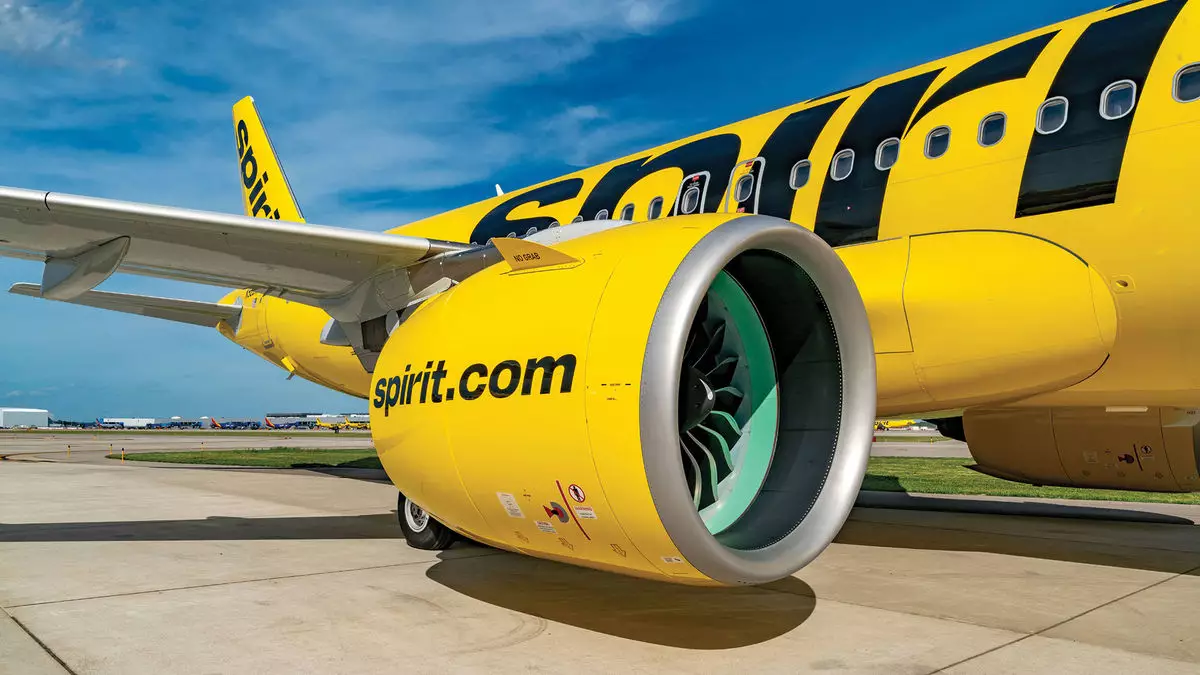The airline industry is poised for transformative changes as we transition into the new year. As low-cost carriers gear up to compete in the burgeoning premium market, the landscape will witness a shift that not only impacts consumers’ flying experiences but also sets the stage for the financial resilience of various airlines. Spirit Airlines, in particular, finds itself at a critical juncture as it navigates through Chapter 11 bankruptcy in an attempt to stabilize its financial footing. Meanwhile, more established carriers like United and Delta continue to enhance their premium offerings, reflecting a broader trend towards elevated customer expectations post-pandemic.
Recent trends in consumer behavior highlight a growing demand for comfort and convenience in air travel. Following the disruptions caused by the COVID-19 pandemic, travelers have increasingly gravitated towards airlines that prioritize premium services. Major airlines like United and Delta have experienced substantial profit margins, largely due to their richly developed premium products, which attract a discerning clientele. This trend signals that not all customers prioritize low-fares; rather, many are willing to invest more in a superior flying experience.
In response to this shifting demographic, Southwest Airlines plans to introduce extra-legroom seats designed to cater to comfort-oriented travelers. By color coding the seating—light blue for upgraded options and deep blue for standard seats—Southwest aims to clearly delineate its enhanced offerings, thereby tapping into the lucrative market for premium seating.
While major airlines have dominated the premium segment, smaller carriers are also strategizing their approach to capture market interest. Alaska Airlines has reported robust profit margins this year, showcasing potential resilience in a tough market. Its forthcoming initiative to enhance the seating configuration on 218 narrowbody aircraft is expected to add a level of sophistication and comfort that rivals larger competitors.
Frontier Airlines is also expected to redefine its offerings with the introduction of first-class seating. This move signifies that even budget airlines recognize the need to provide quality experiences to secure customer loyalty. As the competitive landscape heats up, the stakes are high for all entities involved, and the strategies adopted now will shape the market landscape in the immediate future.
Despite optimistic developments within the airlines’ operational frameworks, challenges lurk in the background. Airlines are grappling with the distribution model, particularly in their approach to New Distribution Capability (NDC). American Airlines, once seen as a disruptor, has retreated from its previous strategies. This pivot raises concerns over the vitality of NDC and whether travel agencies will sustain their investments in the evolving technology.
Analysts suggest that unless airlines shift their approach to make NDC more attractive and accessible, the potential for widespread adoption may diminish. Currently, only a fraction of airline transactions are NDC-enabled, and without further technological investments and consumer incentives, the momentum needed to spur growth in this domain may stagnate.
Beyond the battle of seating arrangements and distribution strategies, international travel is on the precipice of expansion. Travelers can look forward to new nonstop routes, with United Airlines boldly announcing its plans to launch the first direct flights from the U.S. to destinations like Greenland and Mongolia. This expansion represents a recovery in consumer interest in international travel and a crucial opportunity for airlines to cater to the growing appetite for diverse travel experiences.
While these exciting developments unfold, the collaboration between airlines and travel agencies remains critical. Enhanced connectivity will serve to elevate the overall quality of air travel. Increased routes open new possibilities, but ensuring customers can easily navigate booking systems and secure the best value will be paramount for airlines.
Spirit Airlines, navigating a challenging financial landscape, must prioritize the exploration of innovative pathways for profitability. Analysts suggest that its potential merger with Frontier could serve as a noteworthy pivot that reshapes the budget airline sector. As Spirit works through its restructuring process, the focus will need to shift towards revitalizing its business model to not only emerge from bankruptcy but also capture market interest in a fiercely competitive environment.
Ultimately, the trajectory of the airline industry in 2025 presents an amalgamation of opportunity and challenge. As airlines compete for increased market share and profitability, consumers will undoubtedly experience a transformation in their flying choices—one that emphasizes comfort, convenience, and improved global connectivity. The coming year will act as a pivotal chapter in defining the future of air travel, where adaptability and consumer focus will determine success amidst rapid evolution.


Leave a Reply